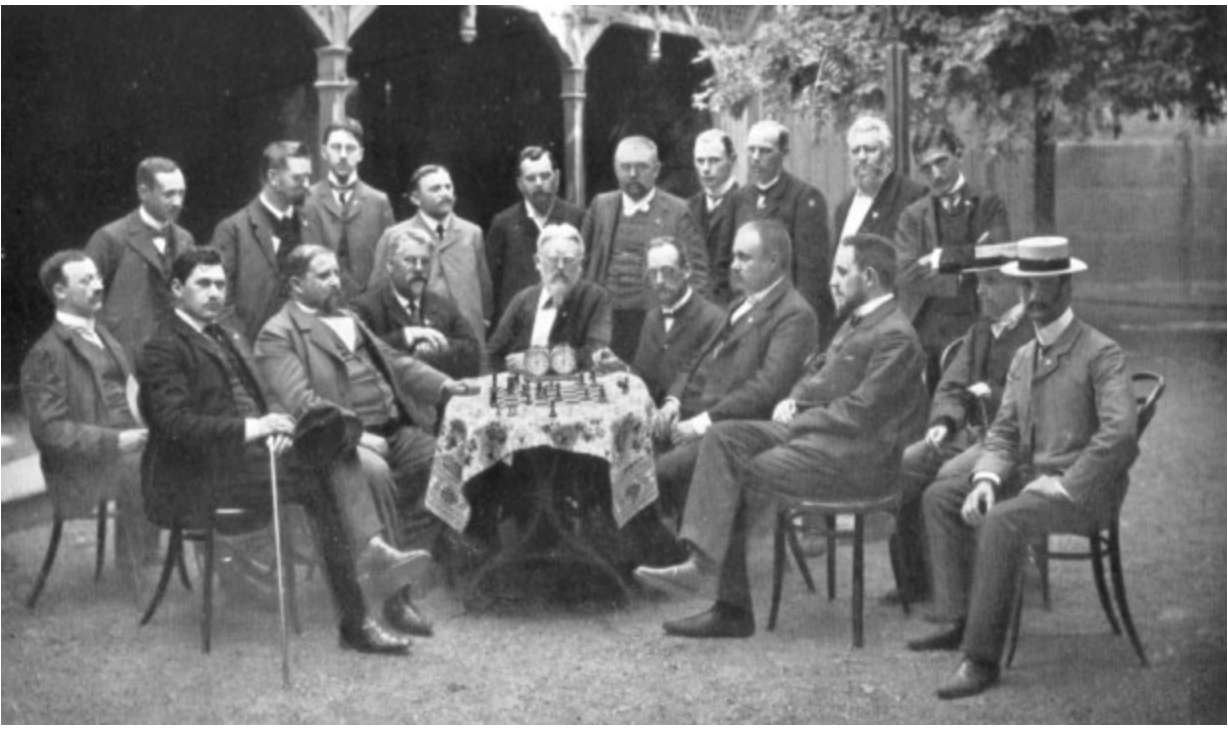
A Century of Chess: Rudolf Swiderski (1900-1909)
"Of all the chess masters I ever met Rudolf Swiderski was the most weird," wrote Frank Marshall. Which - just think of all the chess masters you know - is probably really saying something. "He made very few friends, had a gentle but melancholy disposition, was a fine violinist, ate raw meat, committed suicide a few years later," Marshall continued. 
I've had the sense, actually, that Swiderski was a truly great player - kind of a precursor to Aron Nimzowitsch and a pioneer of hypermodernism. His results were less wonderful than they could have been because he suffered from some sort of failure of nerve. He was winning outright at the strong Coburg 1904 tournament and then collapsed in the last round against the tailender Walter John. The same thing occurred to him at Barmen-B in 1905 when he lost his lost two games, once again through a string of unforced errors and dropped to second place. This difficulty with nerves got the better of his talent, and his results were suddenly very weak in the years just before his suicide in 1909. 
Edward Winter has a page that puts together various contemporary press clippings on his suicide but they leave more questions than answers. The canonical explanation is the Wertheresque story that Swiderski was being investigated for perjury in a court case involving a love affair. 
But another article has the more prosaic version that he had killed himself 'on account of his living circumstances' and to avoid undergoing a 'necessary operation.' If the story of the love affair, court case, and scandal were true, it's surprising that more information about it hasn't surfaced. In its obituary, The American Chess Bulletin wrote, "Though endowed with talents above the average, the deceased found full consolation neither as a musician, as a chess player, nor as an artist. A physical ailment of several years' standing undermined his spirit, weakening the desire to live."
Swiderski's Style
1. Strong King
Swiderski was primarily a defensive wizard - part of the chess tradition that runs from Steinitz to Nimzowitsch, Benko, Adams, etc. He specialized in getting into really terrifying-looking positions and then coolly crawling his way out. His greatest asset here was a special connection he had with his king - he was the classical era's leading proponent of Steinitz's 'active king' approach, and his king seemed to be unusually nimble in escaping danger.
2. Pre-Hypermodernism
Nimzowitsch claimed that his 'system' was less his own breakthrough than an observation of the deeper practice of master games. He never cites Swiderski in My System or Chess Praxis - but Swiderski certainly may have been one of the players he was thinking of: Swiderski's love for the French Defense, his focus on well-structured defensive positions, and his employment of concepts like overprotection as in this game with Schlechter.
3. Acute Angle of Attack
I've noticed that the great defenders tend to have a unique sense for when it's the right moment to switch over to the attack. Petrosian is the most famous for launching attacks out of the clear blue sky, but Nimzowitsch, Benko, and Swiderski have this quality as well - the attack materializing unexpectedly and with force, after some protracted maneuvering.
Swiderski in the Opening
French Defense
Exhibit A in the claim that Swiderski was Nimzowitsch before Nimzowitsch is his passionate advocacy of the French Defense. French players are a special breed within the chess world - they have a greater willingness to take on cramped and often ugly positions, and they tend to be very attuned to intricate strategic ideas and to possibilities of counter-attack. All of these were Swiderski's preeminent traits. He's of course not as well-known as Nimzowitsch, Petrosian, Korchnoi, even Uhlmann, but deserves recognition as one of the 'saints' of the French Defense.
Queen's Pawn Game
I have the sense that some of the more strategic-minded players of the classical era were very serious about developing the theory of the Queen's Pawn Opening and proving that white could have an enduring advantage without taking on any real risks. Swiderski was a bit ahead of Akiba Rubinstein in this project, which the chess world has drifted away from since - the conviction being that the Queen's Pawn opening can defer the action to the middlegame but that white, if he really wants a theoretical advantage, has to fight for the initiative sooner rather than later.
